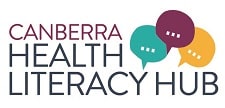Health Numeracy
What is Health Numeracy?
Health Numeracy is an important part of health literacy. It is the: “degree to which individuals have the capacity to access, process, interpret, communicate and act on numerical, quantitative, graphical, statistical and probability information needed to make effective health decisions.”[i]
Numeracy is important because it allows people to make sense of health information that uses numbers. Health-related tasks that involve numeracy skills include:
- understanding nutrition information,
- interpreting blood sugar and blood pressure readings,
- recording readings or results,
- measuring or adjusting medications,
- making and keeping appointments,
- reading graphs and tables, and
- understanding information about risk, e.g. probability.
“While literacy and numeracy are strongly correlated […] many patients [have] adequate reading ability but poor numeracy skills”[ii].
Health numeracy involves many skills:
- Recognising and understanding numbers
- Counting
- Understanding hierarchy e.g. what number or fraction is larger compared to another
- Calculations (addition, subtraction, multiplication, division)
- Understanding time / dates
- Reading graphs / tables / figures
- Measurement
- Using fractions / decimals / percentages / proportions
- Understanding probability
- Applying logic
- Statistics
- Critical thinking and problem solving

Numeracy and Problem Solving
Numeracy also includes knowing which maths or problem-solving skills to use in different situations.
People who had difficulty learning maths at school may have limited basic maths skills, or be unable to use what skills they do have when unwell or under stress. This mismatch between the numeracy skills required in healthcare settings and the actual skills of consumers, can result in poorer health. Patients with chronic illnesses are particularly at risk of poor health resulting from low health numeracy if they self-manage aspects of their health or calculate medication dosages.
For patients to use number based health information well they must:
- Have good communication with the person providing the information (e.g. a doctor, a nurse, a dietitian or a friend or family member), and
- Get good quality information ( e.g. a written handout or a website).
Both the consumer and the person giving them the information must understand and be able to interpret number-based information, as well as communicate about it. They both also need skills for using information shown in graphs, diagrams, tables, and charts. The suitability of the information and the consumer’s ability to understand it and apply it to their individual circumstances are both strongly influenced by the design of the information. Good design can make it easier to understand the information[iii].
Dig Deeper
Numeracy skills can have a big impact on health and wellbeing. This stems from more than the ability to understand numerical information[iv]. Numeracy is also associated with:
- The level of risk an individual is willing to accept – high numeracy skills correlate with a lower risk appetite
- The ability to delay reward, for example individuals can defer an immediate gain or reward in order to get a larger one in the future
- People’s willingness to gather information and seek to understand something before making decisions
- People with a high level of numeracy appear to be better able to process non-numerical information correctly and to distinguish between relevant and irrelevant information.
You can explore the link between numeracy and understanding risk in health care decisions and informed consent in more detail on the following page:
Understanding Risk and Benefit for consumers
Communicating about risk and Benefit for health professionals
References:
[i] Golbeck AL, Ahlers-Schmidt CR, Paschal AM, Dismuke SE. A definition and operational framework for health numeracy, American Journal of Preventive Medicine, 2005 : 29: 375-376
[ii] Rothman, R. L., Montori, V. M., Cherrington, A., & Pignone, M. P. (2008). Perspective: the role of numeracy in health care. Journal of health communication, 13(6), 583–595. https://doi.org/10.1080/10810730802281791
[iii] Rothman, R. L., Montori, V. M., Cherrington, A., & Pignone, M. P. (2008). Perspective: the role of numeracy in health care. Journal of health communication, 13(6), 583–595. https://doi.org/10.1080/10810730802281791
[iv] Jonas, N. (2018), “Numeracy practices and numeracy skills among adults”, OECD Education Working Papers, No. 177, OECD Publishing, Paris, https://doi.org/10.1787/8f19fc9f-en.
Last Updated on 30 June, 2021.




